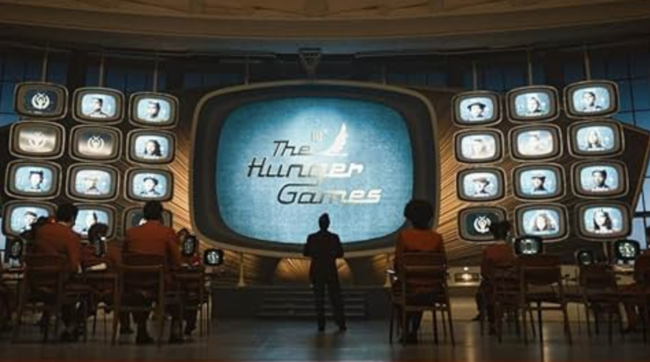“Welcome! Welcome, welcome. Happy Hunger Games, and may the odds be ever in your favor.”
With those words, a world was born. Suzanne Collins released the first novel in her bestseller series, The Hunger Games, in 2008. Three books and five movies later, Collins is keeping viewers hooked. In my past reviews, I’ve referred to movies as “emotional rollercoasters,” but watching and experiencing The Ballad of Songbirds and Snakes took the meaning of that phrase to a whole new level.
The film, directed by Francis Lawrence, takes us on a three-part journey through the backstory of Coriolanus Snow. Those familiar with the original trilogy remember President Snow as the villain, but after watching The Ballad of Songbirds and Snakes it’s impossible to continue seeing him so one-dimensionally. Instead, we see a deeper, more intricate, side of the story, one that truly puts Snow’s full character on display.
In the span of two and a half hours, Snow goes from a young man trying to make ends meet, to a coldhearted killer. Tom Blyth delivers Snow’s infamous line, “Snow lands on top,” both at the start and end of the film, bringing his character’s villainous charisma to life.
In the first act, we are introduced to the tribute Snow mentors, Lucy Gray Baird. Baird, played by Rachel Zegler, is a tribute from district twelve, and a parallel to Katniss Everdeen. Describing the depth of Zegler’s performance is impossible, it must be seen to be understood. You have to hear her sing the Hanging Tree song, or watch her eyes during her final minutes on screen, to see the true magic Zegler delivers.
Jason Schwartzman, Viola Davis and Josh Andrés Rivera rounded out the film with their shining supporting roles. Everything Davis did, from her singular piercing blue eye to her dominating and malicious presence in every scene, gave her character, Head Gamemaker Dr. Gaul, life. Jason Schwartzman, who played Lucky Flickerman, brought a breath of fresh air to the movie, supplying the audience with little moments of laughter even in the most terrifying scenes. Josh Andrés Rivera’s Sejanus Plinth was defiant yet naive in contrast to Snow. As Snow’s attitude towards Plinth changed throughout the film, we could see how the shift affected both characters thanks to the deeply revealing acting of both Blyth and Rivera.
As with any action movie, cinematography is key. Joe Willems, the cinematographer for The Ballad of Songbirds and Snakes, intentionally used space and setting to tie pieces of the film together. Every camera angle and every shot is meticulously planned to provide the most pleasure, laughter or terror in any given moment. Willems is also responsible for the multiple jump scares that sent my heart leaping out of my chest.
In addition to acting and cinematography, this film’s score was its standout feature. Zegler’s Baird sings a myriad of songs throughout the film, some of which are subtle hints to the songs Katniss sings in the other Hunger Games films. There was subtext underneath everything Baird sang, captured excellently by both the songwriters and cinematographers.
Besides the songs, sprinkled throughout the film were many parallels and easter eggs from the original series, ranging from the iconic Katniss Everdeen bow (that any Hunger Games fan could spot from a mile away), to Snow’s fondness for roses and the final line of the film (I won’t spoil, you’ll have to watch it yourself to find out). Coriolanus Snow’s origin tale was a well-told, well-acted and well-edited masterpiece that I was lucky to experience and I highly recommend.






